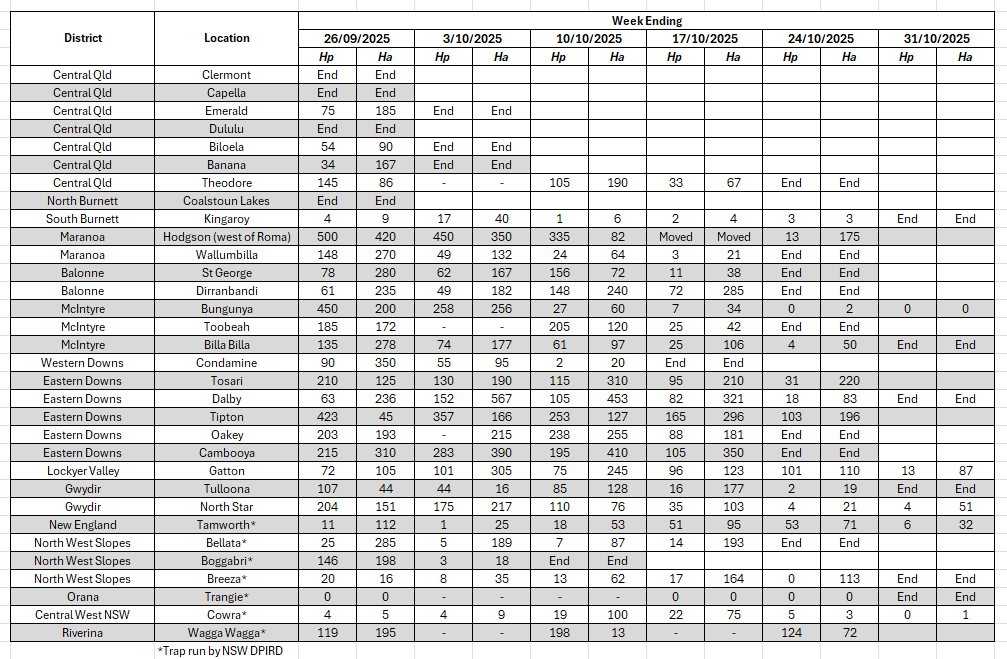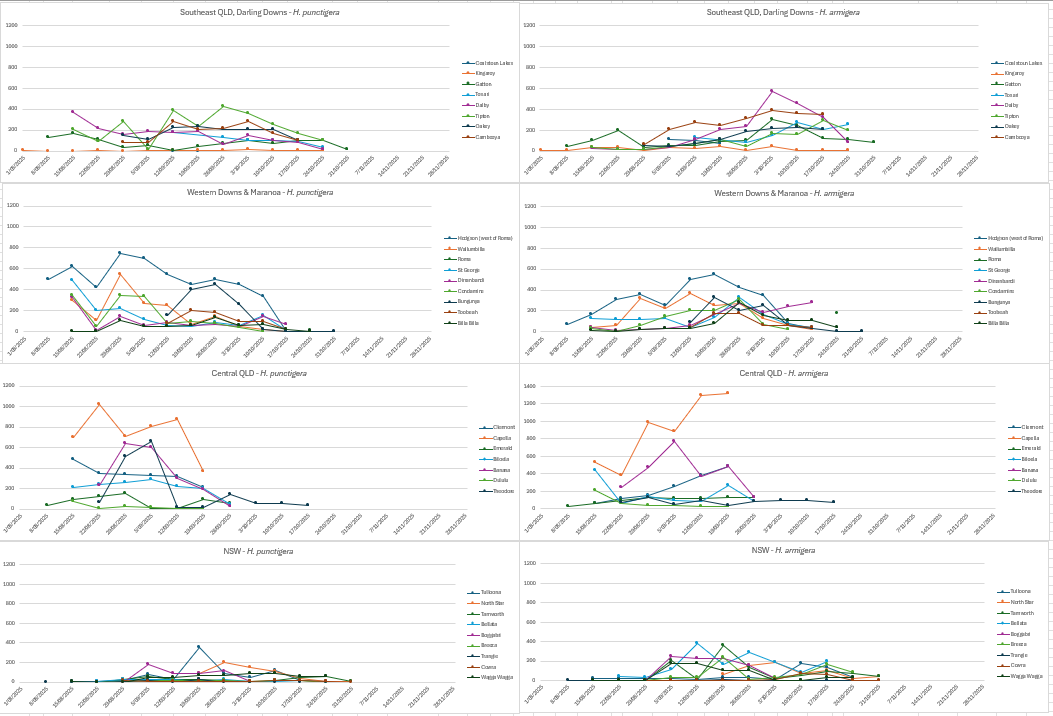The QLD DPI coordinated Helicoverpa trapping program for 2025 began in early August. Results will be added to this page as they become available. The network would not be possible without the help of the many growers and consultants who donate their time to running them.
***The Helicoverpa moth trapping program has now finished for 2025***
Week ending 31/10/25
Helicoverpa moth trap numbers by station
* Traps run by NSW DPIRD
Helicoverpa moth trap numbers by region (click on picture to enlarge)
For FAW trap catch results, visit the FAW pheromone traps page.
Historical data for trap catches for helicoverpa (from 2015-2020) is available here.
Setting up your own traps
Setting up your own pheromone trap(s) to monitor helicoverpa is relatively simple. For more information on suppliers and assembly visit the Beatsheet’s Pheromone traps page.
Using the trap data
It is important to note that the primary function of pheromone traps is not to provide definitive counts, but to act as an ‘early warning’ for adult presence. In-crop sampling is required to accurately assess the presence of eggs and juvenile stages.
A prediction can be generated of when larvae may be present in the field by using DARABUG, a model that provides a convenient and readily available means of predicting development times using insect models. Gridded climatic data of daily temperatures is used to generate estimates of the dates of occurrence for each stage throughout the whole life-cycle of an insect.
The model currently provides estimates for Helicoverpa punctigera (native budworm); Helicoverpa armigera has similar development times.


